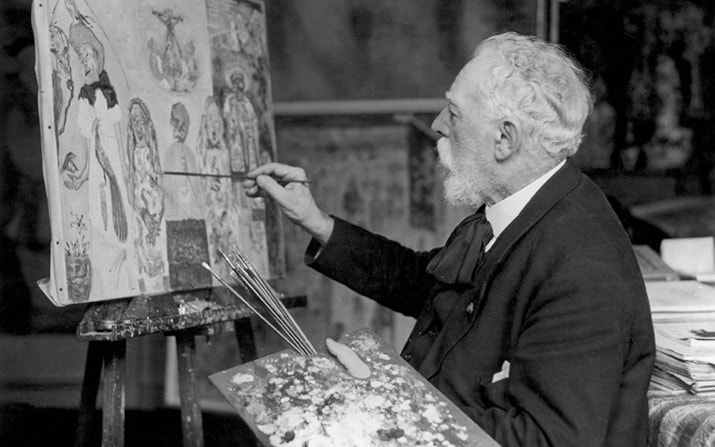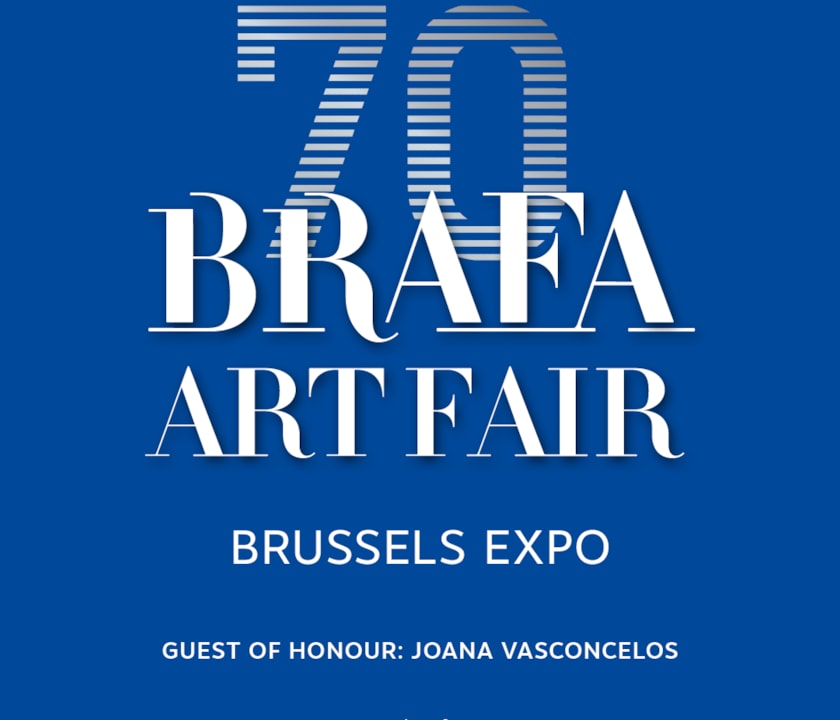James Ensor
(1860 - 1949)

James Ensor
(1860 - 1949)
In 1873 liep de jonge Ensor school op het Oostendse Onze-Lieve-Vrouwecollege. Hij toonde zijn eerste tekeningen en schilderwerkjes, toen hij amper 14 was, aan de toen bekende meester Louis Dubois, die hem aanmoedigde. Ensor bleef slechts twee jaar op deze school. Hij volgde daarna schilder- en tekenlessen bij twee Oostendse kunstschilders Edouard Dubar (een marineschilder die fotograaf werd en lithografieën uitgaf) en Michel Van Cuyck (een olieverfschilder, aquarellist en lithograaf). Ook hier toonde hij zich opstandig en had geen hoge dunk van hun "bedrieglijke spons- en tekentechniek, van hun saai, geborneerd en doodgeboren metier".
Ensor was 17 jaar toen hij zich op 8 oktober 1877 liet inschrijven aan de Koninklijke Academie voor Schone Kunsten in Brussel. Het was de enige keer dat hij Oostende verliet voor een langere tijd van drie jaar. Hij maakte kennis met enkele mede-leerlingen: Willy Finch, Paul Dubois, Fernand Khnopff, Willy Schlobach, Guillaume Van Strydonck, Rudolph Wystman en Dario de Regoyos.
In die periode tekende Ensor een aantal volksfiguren uit Oostende, niet zozeer uit sociale overwegingen, maar om zijn tekentalent verder te ontwikkelen.
Toen Ensor in 1880 20 jaar oud was, verliet hij de academie en daarmee ook meteen Brussel. Het resultaat van zijn opleiding was niet zo schitterend geweest. Hij kreeg slechts een zevende prijs voor het tekenen naar het klassieke model en een tiende prijs voor het schilderen naar de natuur. Het maakte van hem een boos en verbitterd man en hij zou deze gemoedsstemming uitbeelden in sarcastische en satirische scènes. Hij keerde naar Oostende terug, bij zijn ouders op de hoek van de Vlaanderenhelling en de Van Iseghemlaan. Om te ontsnappen aan zijn bazige moeder trok hij zich terug op de zolder en richtte er zijn eerste atelier in. Vanuit het grote zoldervenster had hij een zicht in vogelperspectief op de zee, op straten, gebouwen en voorbijgangers. Dit uitzicht zou zich dan ook weerspiegelen in vele werken. Hij bleef hier wonen tot 1917 en hij maakte ook hier zijn beste schilderijen.
Ensor was 17 jaar toen hij zich op 8 oktober 1877 liet inschrijven aan de Koninklijke Academie voor Schone Kunsten in Brussel. Het was de enige keer dat hij Oostende verliet voor een langere tijd van drie jaar. Hij maakte kennis met enkele mede-leerlingen: Willy Finch, Paul Dubois, Fernand Khnopff, Willy Schlobach, Guillaume Van Strydonck, Rudolph Wystman en Dario de Regoyos.
In die periode tekende Ensor een aantal volksfiguren uit Oostende, niet zozeer uit sociale overwegingen, maar om zijn tekentalent verder te ontwikkelen.
Toen Ensor in 1880 20 jaar oud was, verliet hij de academie en daarmee ook meteen Brussel. Het resultaat van zijn opleiding was niet zo schitterend geweest. Hij kreeg slechts een zevende prijs voor het tekenen naar het klassieke model en een tiende prijs voor het schilderen naar de natuur. Het maakte van hem een boos en verbitterd man en hij zou deze gemoedsstemming uitbeelden in sarcastische en satirische scènes. Hij keerde naar Oostende terug, bij zijn ouders op de hoek van de Vlaanderenhelling en de Van Iseghemlaan. Om te ontsnappen aan zijn bazige moeder trok hij zich terug op de zolder en richtte er zijn eerste atelier in. Vanuit het grote zoldervenster had hij een zicht in vogelperspectief op de zee, op straten, gebouwen en voorbijgangers. Dit uitzicht zou zich dan ook weerspiegelen in vele werken. Hij bleef hier wonen tot 1917 en hij maakte ook hier zijn beste schilderijen.
werken













